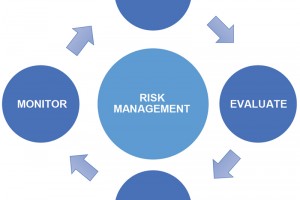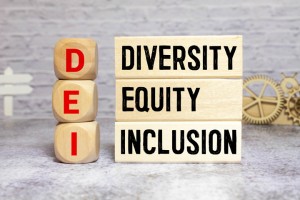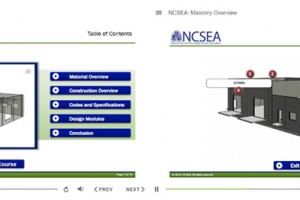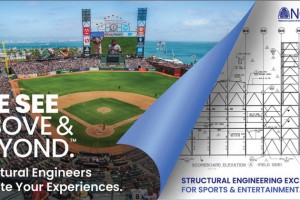There have been many articles and discussions about the misconceptions between the public and the profession regarding the performance level of code-compliant buildings. Historically, Building Codes (and ASCE 7, Minimum Design Loads and Associated Criteria for Buildings and Other Structures) have focused on ensuring life safety. For hazards that do not offer much advanced warning (e.g., earthquakes, tsunamis, and tornadoes), a focus on life safety saves lives. Still, it is not sufficient to make communities resilient to these hazards. After an earthquake, for example, many buildings are tagged as needing substantial work before they are safe to enter, leaving communities displaced and distressed for long periods. Looking at ASCE 7 today, a practitioner sees many pages dedicated to the design of elements beyond the primary structural system, which may not tie as directly to life safety.
…Review Category : Editorial
Risk is an inevitable part of doing business. Active management of the risk is what creates consistently successful organizations. Risk management is defined as forecasting and evaluating financial risks and identifying procedures to avoid or minimize their impact. As structural engineers, we have a specific set of risks in doing business. We need to 1) identify the risks, 2) evaluate their relative significance, 3) develop procedures to minimize those risks, and 4) monitor the results. I like to view our risk exposure through the project life cycle lens.
……the butterfly may say, this growth was uncomfortable!
Organizations that promote and foster diversity, equity, and inclusion (DEI) are, according to recent studies, more successful and have higher retention rates. According to McKinsey & Company, leaders in ASCE who “walk the talk” of diversity, equity, inclusion, and justice also financially outperformed competition and have stronger boards. Performance, in general, is enhanced. These companies create safe spaces for their employees to discuss issues.
…“The time has come for all good men to come to the aid of their country.”
This famous quote resides somewhere in my brain, and as I start my tenure as NCSEA President, it recently resurfaced. Not that it is applicable word for word. And in the current geopolitical environment, this phrase has much more serious connotations. But maybe substitute “profession” or “environment” for “country” and exchange “people” for “men.” With those edits, this phrase seems to suit my mindset well.
…Your business development, and sanity, can benefit greatly from becoming an active member of CASE. I can speak highly of the membership benefits, and I’m not just saying that as the incoming chair!
…For many in the structural engineering industry, when we hear of the SEI standards, we automatically think of the ASCE/SEI 7, Minimum Design Loads and Associated Criteria for Buildings and Other Structures, and that is where our knowledge stops. However, the Codes and Standards Activities Division (CSAD) of SEI is responsible for developing and updating twenty-five standards.
…While the effect of the Covid pandemic on today’s workforce will be written about for years, one segment of this workforce that I have seen affected directly is recent college graduates.
…By the time you are reading this, the 2021 election season is behind us. Although the recent elections did not have national office implications, offices for elected officials were likely held where the reader lives. Did you participate in any way? Did you take the opportunity to vote? Have you ever considered running for elected office?
…How much are you willing to invest in your success? Structural engineers spend $10s, if not $100s of thousands preparing to launch their careers technically. And that is usually sufficient for the first five years of a career. Beyond this, what are you personally investing to enhance your career and your practice? For our practices, firms, and companies to grow and thrive requires competent people, 21st-century solutions to address 21st-century problems, business savvy, and more. Ensuring a strong pipeline of people, solutions, and business aids necessitates collective investment. No one firm can accomplish this alone. This is where the SEI Futures Fund comes in.
…As a teenager, I had a dramatic introduction to the important role that structural engineers play in our communities. I vividly remember the moment the ground started shaking as I sat in Candlestick Park with my mom and my brother awaiting the start of the third game of the 1989 World Series. It wasn’t too long after the shaking stopped that images of the damage caused by the Loma Prieta Earthquake started appearing on the hand-held TV being watched by the people in front of us. I remember trying to process what just happened: feeling very thankful that the stadium remained standing while thinking about the damaged structures and the lives that were affected. At the time, I did not know if I wanted to become a structural engineer. However, I know that experience ignited a curiosity about what it takes for engineers to design the structures that give us the places in which we live, work, and play. Months of disruption and recovery further demonstrated the impact that structural engineers have on our daily lives and routines.
…






